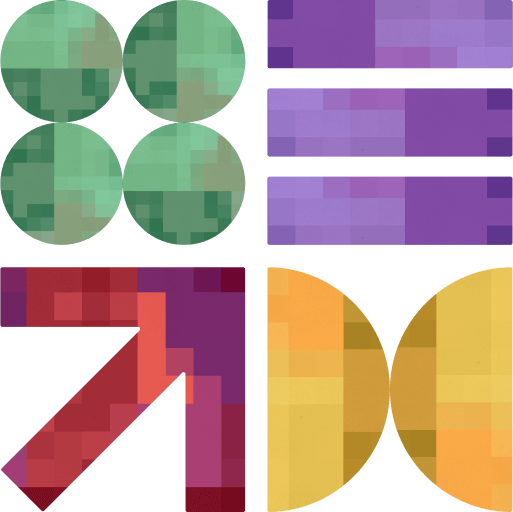Flutter vs React Native – Which One to Choose for Your Next App?

Flutter vs React Native is one of the ongoing debates when it comes to app development. Both are popular frameworks that are supported by tech giants and have been used by 2+ million developers. So, if you’re planning a new app soon, you should be choosing one of these.
Yet before getting to Flutter vs React Native, let’s quickly go over each of these frameworks.
What Is Flutter?
Released in 2017, Flutter is an open-source user interface toolkit developed by Google. It helps create high-performance, cross-platform applications for different devices using a single codebase.
Flutter uses Dart, a programming language by Google. Further, it relies on a reactive framework to create user interfaces. This means that the UI is built using a composition of widgets, i.e. reusable building blocks like buttons and text fields.
In addition to a set of pre-designed widgets, developers can create custom widgets according to the needs of their project.
Benefits of Flutter
According to a Statista survey, 46% of developers used Flutter. This is because of the numerous benefits it delivers, including –
- Quicker Development – With Flutter, you can build applications for multiple platforms using a single codebase. Moreover, Flutter’s hot reload feature allows developers to see any changes they make immediately, without a full app restart. Due to these, development time and effort are significantly lower.
- Native-Like Performance – Flutter uses a “skia” rendering engine that compiles Flutter code into native machine code. This enables apps to achieve high performance and deliver a smooth user experience, similar to that of native applications.
- Rich Set of Widgets – The framework provides an extensive collection of customizable and pre-designed widgets. These can be used to create beautiful and intuitive user interfaces, and visually appealing and consistent app designs across platforms.
- Access to Device Features – Flutter offers native-like access to various device features such as camera, GPS, sensors, and more. This allows developers to leverage the full capabilities of the underlying platform and provide rich and engaging user experiences.
- Open-Source and Active Community – This is an open-source framework backed by Google. It has a vibrant community of developers who actively contribute to its development, share knowledge, and provide support. For you, this means many resources, libraries, and packages that you can utilize in your projects.
- Reduced Testing Efforts – Since Flutter apps use a single codebase, the testing efforts are significantly reduced. The testing process tends to be quite streamlined, and consistent behavior across devices is observed.
- Cost-Effective Development – Building cross-platform applications with Flutter can be cost-effective, as you only need to maintain a single development team and codebase. This reduces the resources and time required to develop and maintain apps for different platforms.
What Is React Native?
Now let’s go over the other side of this Flutter vs React Native comparison.
React Native is an open-source framework developed by Facebook. Using it, you can build JavaScript mobile applications. It basically leverages React, a popular JavaScript library for building user interfaces, and combines it with native mobile app development.
Like Flutter, React Native allows you to write code once and deploy it on multiple platforms. It uses a declarative approach: i.e. you describe how the UI should look based on the application’s current state, and React Native takes care of updating the user interface when the state changes.
The framework enables developers to create mobile apps using familiar web development technologies, such as HTML and CSS.
Moreover, it provides a bridge between the JavaScript code and the native components of the mobile platform. Therefore, you get to leverage platform-specific capabilities and build high-performance, native-like apps.
Benefits of React Native
In addition to cross-platform development and access to device features, React Native has the power to deliver the following benefits –
- Code Reusability – With React Native, a significant portion of your codebase can be shared between platforms. This means that you can reuse components, business logic, and utility functions while reducing duplication and improving code maintainability.
- Native-Like Performance – Apps built with this framework are compiled into native code, which enables them to achieve near-native performance. Basically, they utilize the device’s graphics processing unit (GPU) for rendering, resulting in smooth animations and responsive user interfaces.
- Hot Reloading – React Native supports hot reloading. This means that you can see the changes you make to the code in real-time without having to restart the app or recompile the entire codebase.
- Large and Active Community – React Native has a thriving community of developers. This means you can find extensive documentation, tutorials, and ready-to-use open-source libraries. Moreover, the community support makes it easier to troubleshoot issues, find solutions, and accelerate development.
- Rapid Development Cycles – React Native’s modular and component-based architecture, along with its extensive library of pre-built UI components, enables faster development cycles. Developers can quickly build and assemble user interfaces, making it easier to prototype, iterate, and release updates.
- Easy Integration with Existing Apps – React Native allows the seamless integration of its components into existing native apps. This means you can gradually migrate parts of your app or add new features using React Native – all while still utilizing the existing native codebase.
- Developer Efficiency – React Native leverages the popular React ecosystem and its declarative programming model. Developers who are already familiar with React can leverage their existing knowledge and skills, making it easier to adopt and work with React Native.
Flutter vs React Native: The Differences
So far, you may have spotted a few similarities between Flutter and React Native. However, there are a few differences you should factor in while deciding which of these is best for your app.
Performance
Flutter vs React Native from the perspective of performance isn’t easy to define. Aspects such as codebase, layout, and animations should be taken into account to determine this factor.
That said, Flutter has a slight edge since Dart code directly translates into C. Therefore, no bridges are required for the code to communicate with native code. Due to this, it’s safe to say that Flutter wins this comparison… for now.
Native React has been making several changes to address any performance issues it may have. It recently replaced JavaScript bridges with JavaScript Interface. That way, developers can call native modules directly.
Compatibility
Flutter has an edge when it comes to compatibility.
While React Native relies on third-party customization components, Flutter has its own developed widgets.
Another aspect which gives Flutter points is that development is constructed upon widgets while React Native uses JavaScript.
Programming Language
Another important factor to compare Flutter vs React Native is the programming language used. Whereas React Native uses JavaScript, Flutter uses Dart.
JavaScript components can easily be transformed into native components. This makes it easier for most developers to start using React Native. Meanwhile, the object-oriented, cloud-based Dart is older and not widely used.
App Build Size
When it comes to project size, Flutter produces apps with larger file sizes. Therefore, apps tend to require more space.
React Native may also have larger build sizes since they include a JavaScript runtime environment.
However, there are methods that can be used to decrease their sizes. For instance, developers can enable Hermes and ProGuard.
Community Size
Both Flutter and React Native have thriving communities that meet up annually at conferences, hackathons, etc. However, Flutter has an edge here.
According to GitHub, the framework has 144,000 GitHub Stars and 23,000 GitHub Forks. Meanwhile, React Native has 104,000 Stars and 22,400 Forks.
The number of issues closed also indicates how active the Flutter community is. In comparison to its 613,000+ closed issues, React Native only has 21,181 closed issues.
Whatever framework you choose though, make sure to hire the right developers for the job. Here’s a
guide to help you further.
Documentation
Flutter has better documentation when comparing Flutter vs React Native from this aspect.
While both have high quality documentation, React Native’s documentation feels messier. Possibly because of community-developed libraries. Due to this, some developers may need to seek in-depth explanation.
On the other hand, Flutter’s documentation is organized and comprehensive. That’s why it’s easier for programmers to understand and develop with.
Flutter vs React Native: Implementation
To help you further with your choice between Flutter and React Native, here are some points to remember as to when to use each framework.
When to Use Flutter
- When the project’s budget is limited
- For projects with tight deadlines
- If the project requires a cross-platform experience
- To ensure a superb UI and overall great designs
When to Use React Native
- When transitioning from web to mobile application and vice versa
- For projects that require a single tech stack
- If the project requires the use of JavaScript
- When you wish to start quickly since Flutter resources are harder to find
Got More Questions on Flutter vs React Native?
We’re glad to help you in any way we can. Simply get in touch with our app development experts via the form below and we’ll address your concerns ASAP.





